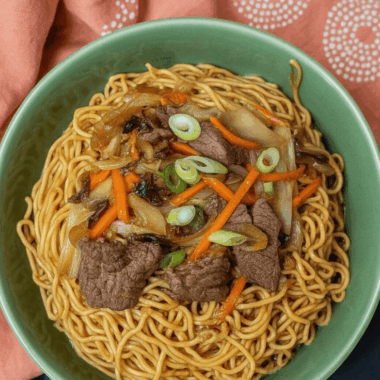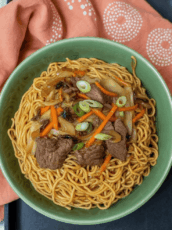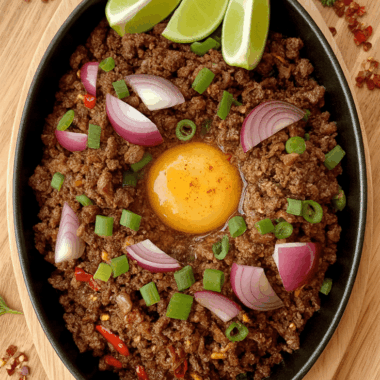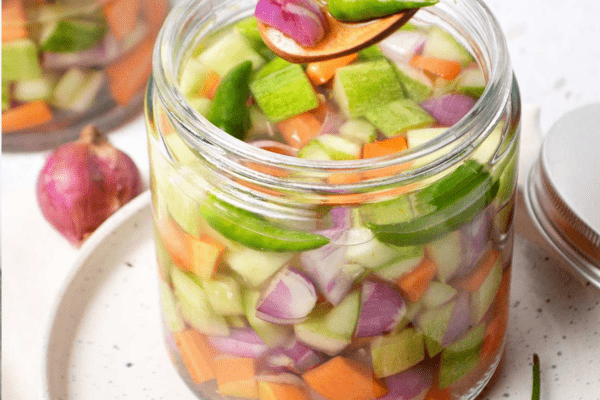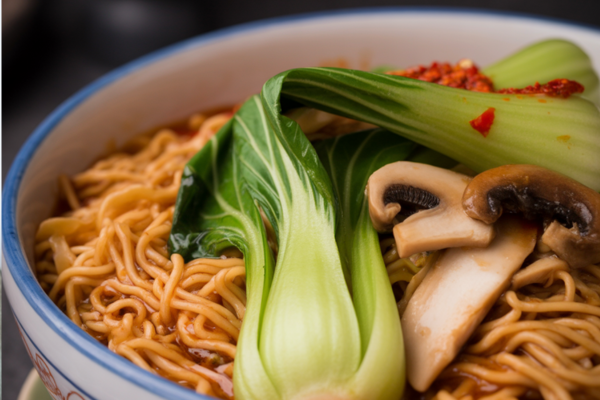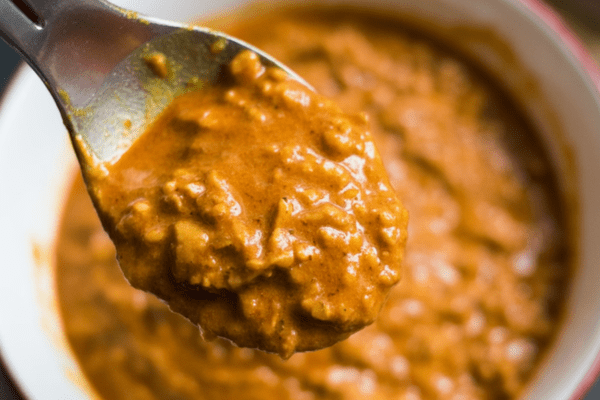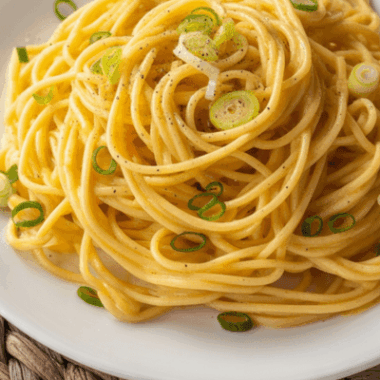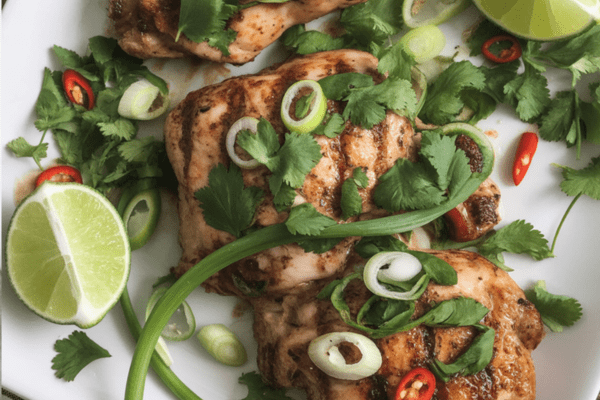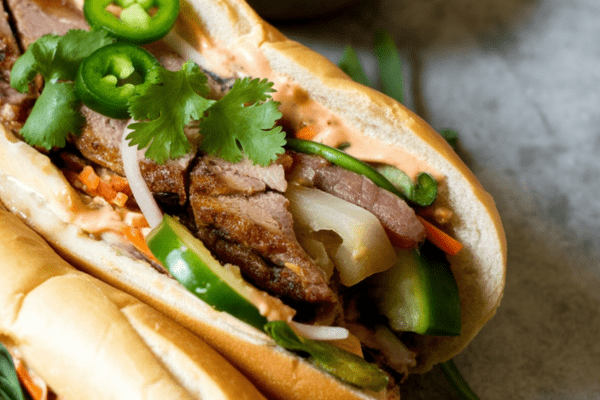This pork belly sisig is everything I love about Filipino food—bold, punchy flavors with crispy bits, a splash of citrus, and just enough spice to keep you going back for more. Whether you’re pairing it with a cold drink or spooning it over rice, this dish is always a hit. It’s the kind of food that disappears fast once it hits the table.
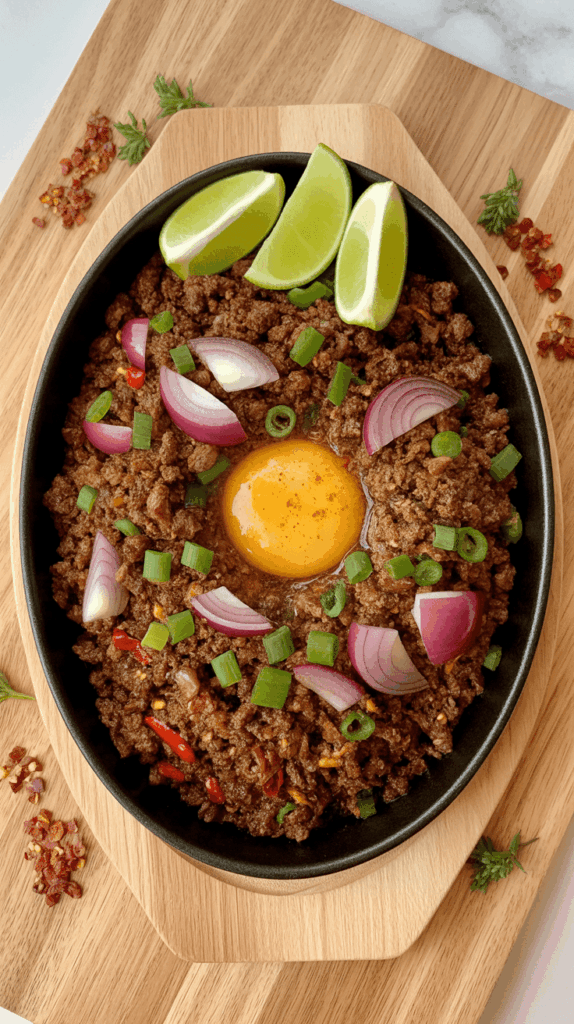
What’s Inside This Dish
At the heart of this recipe is crispy pork belly—chopped up into little pieces so every bite delivers crunch and flavor. It’s sautéed with butter, garlic, onions, chilies, calamansi juice, oyster sauce, and just enough liver to give it that deep, savory richness sisig is known for.
Now, I’ve skipped the mayo here to stick close to the original Kapampangan-style, but let me tell you—I won’t judge if you sneak a dollop in. I’ve done it myself a few times when I wanted something a little extra creamy.
What Makes Sisig So Loved?
Sisig isn’t just a dish—it’s a vibe. If you’ve been to a Filipino get-together, you’ve probably seen this sizzling on a hot plate in the center of the table, usually right next to some ice-cold beers.
What I love most about sisig is that it’s built on simple ingredients but delivers big flavor. It’s tangy, rich, spicy, a little sweet, and has all those crisp edges from the hot plate. Originally made with pig’s head parts like cheeks and ears (back when those were the cheapest cuts), it was a genius way of turning scraps into gold.
For anyone not ready to cook with pig face, pork belly is a great place to start. It still gives you the fat and texture you want—without the butchering adventure.
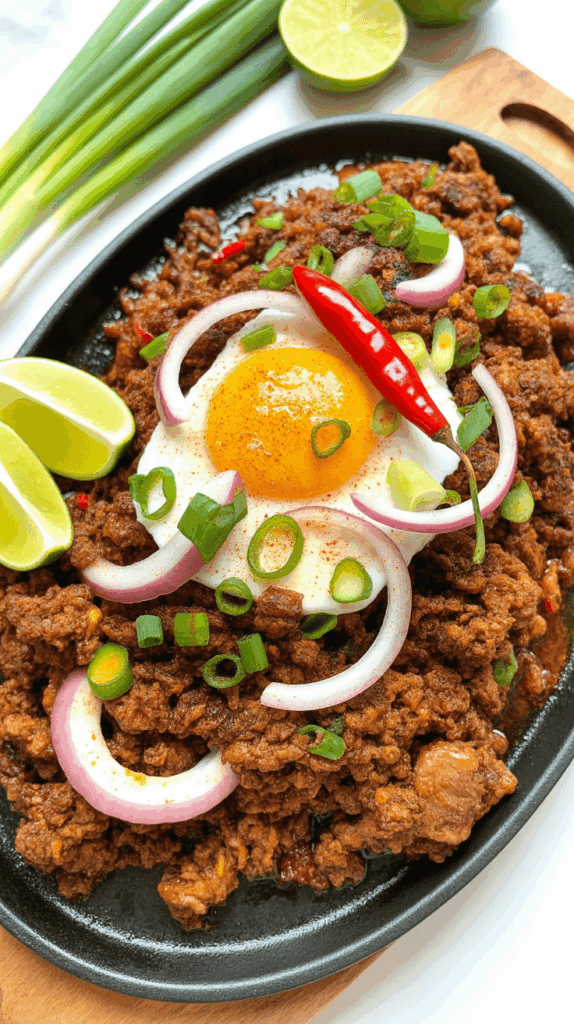
Ingredients & Swaps (With Some Tips)
Pork belly – My go-to cut for this. It crisps up beautifully and has just the right amount of fat. If you’ve got pork jowls or cheeks, go ahead and use those—more traditional and even tastier.
Substitutes: Pork shoulder or butt works too. I’ve even tried tofu and milkfish for a twist, and they turned out surprisingly good.
Aromatics (onions, garlic, bay leaves, peppercorns, chilies) – These build the base flavor. When I’m boiling the pork belly, I throw in a few bay leaves and peppercorns to mellow out that strong porky smell.
Chilies – I usually go for Thai bird’s eye chilies if I want a good kick. But if you’re not into heat, skip or use milder ones.
Butter – Adds richness, especially when serving. In the Philippines, margarine is more common and totally fine to use. I’ve even used leftover bacon fat once—no regrets.
Calamansi – This tiny citrus fruit really brightens up the dish. I usually keep frozen calamansi packs in the freezer, but limes or lemons work fine if you don’t have it.
Liquid seasoning – Think of this as a supercharged soy sauce. It adds depth. If I run out, I use regular soy sauce with a few drops of Worcestershire or a splash of fish sauce.
Oyster sauce – Sweet and savory. Balances the salty and sour flavors. I’ve swapped it with soy sauce and a pinch of sugar in a pinch.
Liver – This adds that deep, meaty flavor. I usually go with chicken liver, since it cooks quickly and blends well. When I don’t have fresh liver, I use Reno liverspread (Filipino brand)—my mom used to swear by it.
Egg – That final touch. Cracked right on top of the hot sisig and gently stirred in—it gives the dish a glossy richness.

How I Make Pork Belly Sisig at Home
1. Boil and Dry the Pork
I toss pork belly chunks into a pot with water, garlic, onions, bay leaves, and peppercorns. Boil it for about 45-50 minutes until tender. Then I drain and stick it in the fridge uncovered for at least an hour (or overnight if I’m prepping ahead). This step helps dry out the pork so it crisps better.
2. Crisp It Up
Air fryer at 350°F for 30-45 minutes does the trick—flip them halfway. No air fryer? Oven or shallow fry works too. You want golden, crunchy skin.
3. Sauté Everything
In a hot pan with butter, I sauté onions, garlic, and chilies until fragrant. Then comes the liver—cook it well until browned and no longer pink.
4. Bring It All Together
Add the crispy pork back in, season with calamansi, oyster sauce, and soy seasoning, and stir-fry until coated and saucy. If the mix looks a bit dry, a splash of water or stock helps.
5. Serve on a Sizzling Plate
Right before serving, I heat up my sizzling plate, grease it with butter, and pile on the sisig. Crack an egg on top, garnish with chopped onions and chilies, and let that egg slowly cook while everything sizzles.
Handy Tips from My Kitchen
- Don’t skip drying the pork belly. It makes a huge difference when crisping. I once skipped it and ended up with chewy instead of crunchy. Lesson learned.
- Cook in batches if you’re doubling the recipe. Overcrowding the pan will steam your pork instead of crisping it.
- Taste before adding extra salt. The sauces already bring a lot of flavor.
- Have fun with toppings. Leftover calamansi, scallions, crushed chicharrón—I like playing around depending on what’s in the fridge.
How I Serve It at Home
At our house, sisig usually lands on the table during movie nights, family dinners, or when we have folks over for drinks. I bring out the sizzling plate, crack the egg on top, and mix it right at the table while it’s still steaming.
Most of the time, we eat it with steamed rice—but I’ve also stuffed it into tacos, topped it on fries, or even thrown it into a quick noodle stir-fry when I’m feeling lazy. And yes—sisig carbonara exists and it’s wild (in the best way).
Storing Leftovers
If we somehow don’t finish everything (rare, honestly), I keep leftovers in an airtight container in the fridge for up to 4 days. I prefer reheating on a skillet to bring the crisp back, but microwave works too.
For longer storage, I freeze portions for up to 2 months. Just thaw overnight and reheat gently.
FAQs I’ve Gotten Over the Years
Do I really need a sizzling plate?
Not a must, but it adds to the whole experience. I found mine in a small Filipino store—nothing fancy. Even a cast-iron pan works fine.
Can I use mayo?
Look, I know purists will say no—but sometimes I stir in a spoonful at the end if I want it creamy. Don’t overthink it—do what tastes good to you.
Can I make it ahead?
Yes! Boil and dry the pork a day before. I’ve even air-fried the pork and stored it, then just reheated and tossed with the sauce when ready to serve.
What if I don’t eat pork?
Shredded chicken, bangus, tofu—they’re all solid alternatives. You won’t get the same richness, but you’ll still have something delicious.
Pork Belly Sisig

There’s nothing quite like the sound of a sizzling plate arriving at the table, topped with crispy pork, punchy aromatics, and a golden egg just beginning to set.
Ingredients
For Boiling the Pork Belly:
- ~1 lb pork belly, cut into smaller sections
- 5 garlic cloves, crushed
- ½ onion, chopped
- 3 bay leaves
- 1 tsp whole black peppercorns
- Water (enough to cover the pork)
For the Sisig Mixture:
- ¼ cup chicken or pork liver, finely chopped
- ¼ red onion, minced
- 2 tbsp unsalted butter
- 3 garlic cloves, minced
- 1–2 Thai chilies, minced
- 1 tbsp oyster sauce
- 1 tbsp liquid seasoning (or soy sauce)
- 1.5 tbsp calamansi juice (or lemon/lime juice)
- Salt and pepper, to taste
For Serving:
- 1 egg
- Chopped red onions
- Chopped green onions
- Chopped Thai chilies
- Calamansi wedges
- 2 tbsp unsalted butter (for greasing the sizzling plate)
Instructions
- 1. Boil the Pork: Place the pork belly in a large pot along with garlic, onion, bay leaves, and peppercorns. Pour in enough water to submerge the meat. Bring to a boil and skim off any foam that rises. Reduce the heat and let it simmer for about 45 to 60 minutes, or until fork-tender.
- Drain the pork and let it cool slightly. For best texture, let it air dry in the refrigerator for at least an hour—or even overnight.
- Crisp Up the Pork
- Once the pork has dried, crisp it up using your preferred method:
- Air fryer: 350°F for 30–45 minutes, flipping occasionally.
- Oven: 400°F for 30–45 minutes.
- Shallow fry: Until golden and crispy.
- Chop the crispy pork into small, bite-sized pieces and set aside.
- 3. Build the Flavor: In a skillet over medium heat, melt the butter. Add the minced onions and sauté until soft and translucent. Stir in the garlic and chilies, cooking until aromatic and lightly golden.
- Add the chopped liver and cook thoroughly, about 5–7 minutes. Once the liver is fully cooked, add the crispy pork and stir everything together.
- Pour in calamansi juice, liquid seasoning, and oyster sauce. Season with salt and pepper to taste. Let everything cook together for a few minutes, allowing the flavors to meld and the sauce to reduce slightly.
- Serve It Sizzling: Heat a sizzling plate and grease it with butter. Transfer the sisig onto the plate and top with a freshly cracked egg. Garnish with chopped red onions, green onions, chilies, and calamansi wedges on the side.
- Let the heat from the plate gently cook the egg, or mix it in just before serving for extra richness. Serve immediately while everything is hot and crisp.
Notes
- Cuts of Pork: While pork belly works beautifully, feel free to explore other cuts like shoulder or pork jowls for a more traditional touch.
- No Liver? Liver spread or pâté works great in a pinch.
- Egg Prep: For a cleaner presentation, fry the egg separately and serve it right on top.
Nutrition Information:
Yield: 1 Serving Size: 1Amount Per Serving: Calories: 2659Total Fat: 170gSaturated Fat: 72gTrans Fat: 1gUnsaturated Fat: 86gCholesterol: 2045mgSodium: 6096mgCarbohydrates: 52gFiber: 6gSugar: 13gProtein: 222g
Asianplated.com, occasionally offers nutritional information for recipes contained on this site. This information is provided as a courtesy and is an estimate only. This information comes from online calculators. Although allchickenrecipes.com attempts to provide accurate nutritional information, these figures are only estimates.
If you’ve never made sisig at home, give this version a go—it’s one of those dishes that looks like it took a ton of effort, but really it’s just about getting a few steps right. And trust me, once you taste that first spoonful—crispy pork, creamy yolk, tangy citrus—it’s hard not to fall in love with it.
Try other Filipino recipes:

